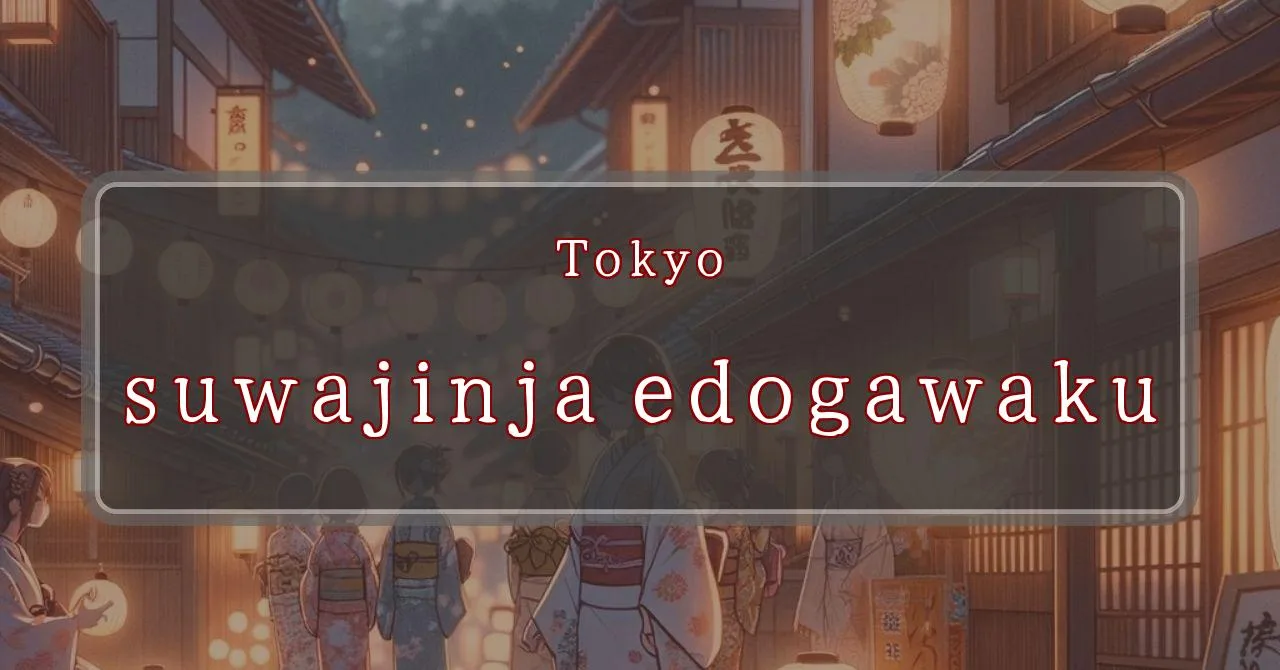Gleaming shrine, vibrant festival, divine experience
Basic Information
諏訪神社 (Suwa Shrine) is a Shinto shrine located in the Edogawa district of Tokyo, Japan. It is dedicated to the deity Takeminakata-no-Mikoto, the god of agriculture, forestry, and water.
Main Events and Attractions of the Festival
The Suwa Shrine Festival is a two-day annual event held on September 16th and 17th. The festival features a variety of events and attractions, including:
Mikoshi Procession
One of the main highlights of the festival is the mikoshi procession. A mikoshi is a portable shrine that is carried through the streets by a team of people. The Suwa Shrine mikoshi is particularly large and impressive, and it is carried by a team of over 100 people.
Kagura Dance
Kagura is a traditional Japanese dance that is often performed at Shinto festivals. The kagura dance at the Suwa Shrine Festival is performed by a group of young women who wear colorful costumes and elaborate headdresses. The dance is said to bring good luck and prosperity to the community.
Bon Odori Dance
Bon Odori is a traditional Japanese folk dance that is performed during the Obon festival, which is a time to honor the spirits of the dead. The Bon Odori dance at the Suwa Shrine Festival is a lively and energetic dance that is enjoyed by people of all ages.
Food Stalls
There are a variety of food stalls at the Suwa Shrine Festival, selling everything from traditional Japanese dishes to international cuisine. There are also a number of games and activities for children, making the festival a fun and festive event for the whole family.
Blessings and Deities
The Suwa Shrine is dedicated to the deity Takeminakata-no-Mikoto, the god of agriculture, forestry, and water. He is said to bring blessings of good harvests, abundant water, and protection from natural disasters.
- Takeminakata-no-Mikoto: God of agriculture, forestry, and water
- Blessings: Good harvests, abundant water, protection from natural disasters
Origin and History
The Suwa Shrine was founded in the year 1634 by a group of farmers who were seeking divine protection for their crops. The shrine was originally a small wooden structure, but it was rebuilt in 1843 using stone and wood. The shrine has been renovated several times over the years, but it still retains its original appearance.
- Founded: 1634
- Rebuilt: 1843
- Current Structure: Stone and wood
Tips and Notes for Visitors
The Suwa Shrine is a popular destination for both domestic and international tourists. Here are a few tips and notes for visitors:
- Hours: The shrine is open from 9:00 AM to 5:00 PM daily.
- Admission: Admission to the shrine is free.
- Dress Code: There is no specific dress code for visiting the shrine, but it is considered respectful to dress modestly.
- Photography: Photography is permitted within the shrine grounds, but it is prohibited inside the main shrine building.
Parking Information
There is a small parking lot available for visitors to the Suwa Shrine. The parking lot is located on the east side of the shrine.
- Location: East side of the shrine
- Capacity: Approximately 20 cars
- Fees: Parking is free
Popular Stalls and Food Carts in Recent Years
| Type of Stall | Description |
|---|---|
| Takoyaki | A staple at Japanese festivals. Characterized by a crispy outside and a creamy inside. |
| Jaga Butter | A simple yet popular snack of hot potatoes lavishly topped with melted butter. |
| Baby Castella | Small castella cakes, sweet and fluffy treats enjoyed by children and adults alike. |
| Grilled Ayu with Salt | Fresh ayu fish grilled whole with salt, a savory taste of Japanese summer. |
| Shaapin | A unique gourmet item influenced by foreign cuisine, with a chewy skin wrapping the filling. |
| Okonomiyaki | A Japanese grilled dish where you often choose your own ingredients for a personalized flavor. |
| Cotton Candy | A fluffy, sweet snack that’s extremely popular with children. |
| Chocolate Banana | A banana coated in chocolate, a fun and visually appealing dessert. |
| Kushiyaki | Various types of ingredients skewered and grilled, an easy-to-enjoy snack. |
| Yakisoba | Fried noodles mixed with a special sauce, a fast food favorite in Japan. |



